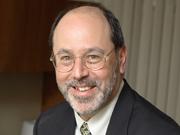Better late than never

Things have been quite exciting here in the States lately where community colleges are concerned. President Obama proposed in his State of the Union address before Congress on January 20th to make two years of community college essentially free. Dubbed “America’s College Promise,” a federal-state partnership grant would grant free tuition to qualified students attending community colleges.
Sadly, the wheels of progress move slowly even here in our relatively young Republic. Sixty-eight years ago, a high-level commission created by President Harry S Truman released a remarkable report. Known as the “Higher Education for American Democracy” report, the findings set the stage for the rapid expansion and construction of community colleges through the United States. Today, there are some 1,132 colleges scattered among the 50 states. The most significant proposal, however, was to make “K-14 education both universal and free.”
Many years later, President Obama has picked up the banner from 1947 and has called upon the United States Congress to enact America’s College Promise. According to an analysis by the Association of Community College Trustees:
The program would eliminate all tuition and fees for up to three years. In order to qualify, students would have to be first-time students who are enrolled at least half-time, and who maintain a minimum 2.5 GPA while making progress towards earning their degrees or certificates. Additionally, the final budget proposal contained an income limit for eligibility. Students and families with an adjusted gross income of $200,000 or higher would not qualify for assistance under this proposal. The program would be “first-dollar,” meaning that low- and moderate-income students would still be able to apply their Pell Grant and other federal student aid to cover books, supplies, housing, and other cost-of-living expenses rather than applying these grant funds first to tuition and then needing to pay for the above-listed expenses with out-of-pocket money. (Additional details may be found here beginning on page S-149 of the higher education budget justifications: http://1.usa.gov/1ACd1BU.)
While many details have yet to emerge on exactly how America’s College Promise would operate within the states and how the federal-state partnership would function, the proposal has ignited a robust discussion from all sides – the likes of which have been a long-time in coming.
As far as this leader is concerned, we are long overdue in focusing the nation’s attention on the need to reinvest in our education and workforce sectors. I have opined before on these pages about how both the United States and United Kingdom have fallen behind the times relative to keeping pace with educational investments around the globe. America’s College Promise at least gives us in the States a golden opportunity to jumpstart that conversation anew. And shame on us if we fall short of the task.
I hope the leaders in the United Kingdom are watching us – particularly with national elections coming this May. Regardless of the outcome of the British elections, a refocusing on education and educational investment, like that emerging in the United States, is critical to our mutual economic well-being. Both our nations were built on strong educational foundations. Let’s make sure those foundations are strong enough to support future generations to come.
J Noah Brown is president and CEO of the Association of Community College Trustees and the author of First in the World: Community Colleges and America’s Future – He is based in Washington, US











Responses